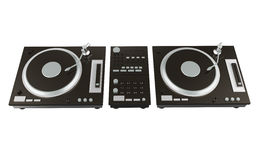
History of Hip Hop and Rap
Hip Hop and rap culture took root as an underground movement in the Bronx, New York. This movement involved four elements: graffiti, break dancing, DJing, and rapping. Graffiti artists would spray paint murals and name tags on trains, trucks, and other public areas as a way to claim their territory and inscribe their hidden identity. Breakdancers street dances put more art forms on the streets with their infamous head spins on the ground and their “electric, robot mimicry, and identity-transforming characterizations foreshadowed the fluid and shocking effect of morphing”(Frith 342). DJing made its initial appearance in the Bronx through block and house parties that would be hosted in the area. Its main emphasis around this time was on the DJ mixers as they played around with the different effects and sounds that it could make. A DJ system used by these artists consisted of at least two turntables and a mixer to control the volume of each turntable. The core innovation of DJing was the isolation of the “break” which was a technique that brings the elemental rhythms of a musical piece to the forefront. Soon rapping began to be introduced and the incorporation of the “break” became the focus for the mixing strategies of rap DJs. By using turntables as an instrument and mixing breakbeats with rapping, the DJs began “extending the most rhythmically compelling elements in a song, creating a new line composed only of the most climactic point in the “original”(Schloss 32). The addition of these rhythmic styles of words that usually rhymed to the sounds made by different DJs is what started to make hip hop culture start to grow and become popular. In the earlier stages, rapping started off as quick little party chants that served as a way to keep the crowd moving and into the song. These chants usually had no meaning behind them and were just lighthearted lyrics to add to the song. As time passed, these lyrics started to take a different form and started to talk about the gangster lifestyle and used boastful lyrics to go in-depth about this lifestyle. These lyrics are the reason why this culture was referred to as “gangsta” rap for some time. However, as this culture grew, some of the lyric schemes started to branch out and take on a more intellectual and political approach. Instead of constantly boasting about the gangster lifestyle seen in the streets, rappers started to break down this lifestyle and point out the problems with it.